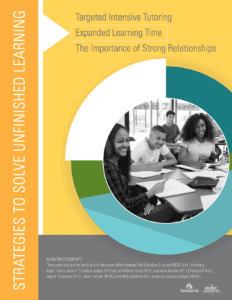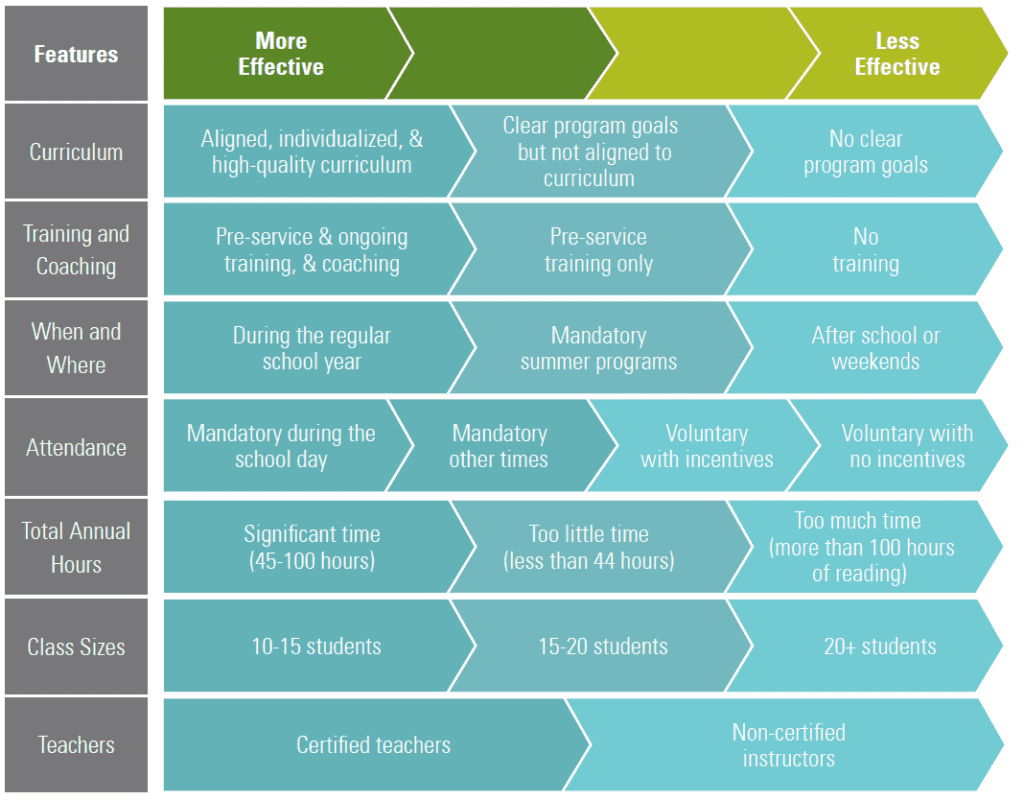Time Frame for Implemented an Extended Language Arts Curriculum
Expanded Learning Time
Mar 17, 2021
A Strategy to Solve Unfinished Learning
As the nation continues to boxing the COVID-19 pandemic and at-domicile learning continues, at that place volition be a demand to help students, especially the nation's most vulnerable students, complete unfinished learning for weeks, months, and even years to come. Research shows expanded learning time (ELT) is i arroyo to helping historically underserved students catch up to see high standards. ELT encompasses programs or strategies implemented to increment the amount of instruction and learning students feel. ELT strategies include afterschool, summer, and in-school programs.
Commune leaders considering ELT should follow the research and invest in show-based methods to support students to get back on track, while also fostering trusting relationships and providing an opportunity for a well-rounded education. Additional fourth dimension can be benign to students, but but if that fourth dimension is spent in ways that maximize teaching and learning. Overall, leaders will need to ensure that all school time is used especially well after months of unfinished instruction. ELT can only exist constructive if fourth dimension during the school twenty-four hour period is also used to efficiently and effectively accelerate learning.
In this brief, we focus on ELT programs that significantly increase the amount of new math and/or English language arts didactics delivered to students.
What Do We Know Nearly What Works?
District and school leaders considering different ways to advance learning volition have to make a number of challenging decisions to run across the needs of students experiencing unfinished learning. District leaders volition need to brand important policy decisions; school leaders will need to brand decisions around staffing, partnering with community organizations or providers, scheduling, and curriculum. With each of these decisions, district and schoolhouse leaders volition take to remainder what the evidence says is nigh effective with what is most feasible given their resource constraints and local context.

How Effective is Expanded Learning Time?
We looked at the research to help leaders navigate complicated decisions. The chart below shows how implementing different features of expanded learning impacts its effectiveness.

Critical Questions for Leaders
Which students benefit most?
Inquiry shows that increasing the number of hours of instruction students receive during the school day (either during nonacademic class periods or by extending the official school twenty-four hour period) can be effective for all historic period groups, types of students, and subject matter.
Beneath are critical questions to ask, based on bachelor research, every bit schools and districts are building plans to completed unfinished learning.
How many students should be placed with an teacher during ELT?
Smaller classes are better for extended learning time. They give teachers the opportunity to provide individualized instruction, which can be especially helpful for students experiencing unfinished learning.
What kind of grooming and support should schools provide for ELT instructors?
The virtually effective ELT programs provide all instructors with pre-service preparation, on-going training, and ane-to-1 coaching.
How should schools extend learning time?
Extra instruction tin accept identify later on school, during breaks, or during the summertime. Educational activity during any of these periods tin be constructive if the instruction is carried out by certified teachers and if the curriculum is both individualized and aligned with the content in the regular school twenty-four hour period. Scheduling decisions should be fabricated equitably to ensure students and families who already face the most injustices do not face up additional barriers.
How much additional learning time should students receive?
Research indicates programs that offering 44 to 100 hours of boosted instruction take an bear on on student learning. Programs that provide more or less extended learning fourth dimension are less effective in some cases; however, the effectiveness depends on the subject area area.
What curricula should schools follow during ELT?
The most effective ELT curricula has content that is aligned with content from the regular school day, and lesson plans that include options for individualized instruction, allowing teachers to tailor instruction to both struggling and high-achieving students.
What is the about effective mode to ensure students nourish ELT?
Unsurprisingly, ELT'south effectiveness is direct tied to student attendance. Schools tin look the highest rates of attendance if instruction is provided during the school day, since the extra teaching is part of the regular schoolhouse schedule.
How should schools staff ELT?
Students have greater increases in learning in ELT classrooms staffed by certified teachers because of these teachers' classroom experience, noesis of the schoolhouse day curriculum, and familiarity with state standards.
Source: https://edtrust.org/resource/expanded-learning-time/
0 Response to "Time Frame for Implemented an Extended Language Arts Curriculum"
Post a Comment